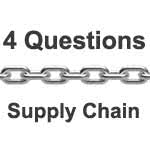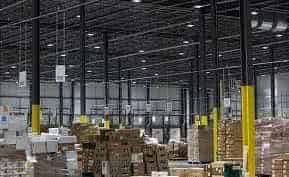Supply Chain Management
4 Questions You Should Ask Your Next Supply Chain Management Vendor

Today I want to give you the four key questions you should ask your next supply chain management (SCM) vendor.
Last year Gartner reported that companies that implemented demand-driven value networks grew revenue faster, achieved more than 15 percent higher perfect-order rates, and reduced levels by as much as a one-third when compared to their peers with traditional, cost-focused value chains.
They also recognized that many companies still lack timely, accurate network-based data as well the ability to execute on that data. They predict that by 2016, half of their Top 25 will begin to exploit intra-and enterprise network-based data through a combination of predictive analytics and auto-generated actionable recommendations.
Many of the companies I speak to are wondering how to best position themselves for the widespread arrival of demand-driven value networks. Since this trend is largely driven by new technology, I want to give the four questions you should ask your next SCM vendor:
1. Can your system coordinate and connect all trading partners from the end consumer to raw material suppliers?
Stacking large numbers of one-off solutions that rely on stale and inaccurate data will never solve the problem. Your solution should be designed from the ground up to enable every member of the value chain to become demand driven. This means every company is viewing a single version of the value chain’s data, but securely packaged and filtered in a way that makes it relevant to their individual role.
A single information “pipe” into the network should provide integration across multiple companies’ ERP systems. The system should take this multi-enterprise data and continuously sync and re-sync demand, supply and capacities in near real time across all trading partners. Every trading partner should be oriented towards the consumer.
2. Does your system operate in real time?
Any changes in the business or operating environment should be automatically sensed by the system and uploaded into the cloud, and then shared with trading partners as appropriate. All in real time.
The result would be an extremely responsive supply network where informational lead times are virtually eliminated and physical lead times are minimized. Regardless of which internal systems are being used or what the existing business processes are, this data needs to be highly accurate and available on demand.
3.Does your system optimize existing processes and add value in new ways?
Connecting a company to a network or system is one thing, but what happens after? The system must add value beyond visibility—it must optimize the existing supply chain. Giving the supply chain a “single version of the truth” in real time would be a powerful tool that any company, regardless of industry, could benefit from. Existing processes would become more efficient and new avenues of value would open up.
For example, you’d finally be able to begin solving the variability problem. Variability—whether of demand or supply—represents the greatest source of risk for supply chains today. The key to managing variability is not creating the perfect forecast; it is creating a leaner, more responsive supply chain. If your raw material suppliers, logistics providers, manufacturers and retailers are all connected to each other and oriented towards the consumer, variability and disruptive events would actually become competitive weapons as automatic execution orders in real time would enable companies to respond more quickly than their competitors.
4. Can your system scale across your entire business? Across all your trading partners?
Today’s decision support tools and processes cannot scale to allow users to be involved in planning millions of buffer sites every day (e.g. a CPG environment). There is far too much information and the decisions required are far too granular for human planners to be effective. Thus, your system should be fully scalable across technology and business processes.
Let’s stay in our hypothetical CPG environment, because in many ways it illustrates the challenges I’m talking about. To be fully demand-driven, your new system would need to calculate the item/location (buffer) level for time horizons from a day out to long lead times as long as 90 days or more. The policies for orders, buffers, and safety stocks would be set at a SKU location basis—the vast amounts of information that this approach generates would overwhelm any conventional system.
Thus, your system should have the ability to manage the millions of daily transactions and data points that large value networks generate. Given that the majority of these transactions are routine and don’t require human intervention, your system should allow people to devote their resources to the complicated one-off problems that only humans can solve.
It must also scale across business processes. Supply chains today are made up of companies that differ greatly by size, approach, and purpose. For this approach to be truly successful, every member of a value network must find value in connecting to the network regardless of ERP, business rules, or company function and role.
To position your company and supply chain for the coming competitive environment, your next SCM vendor should have all four of these characteristics.
To find out more be sure to explore our exclusive Top 5 Supply Chain Collaboration software report and our collection of blog content on supply chain best practices.






